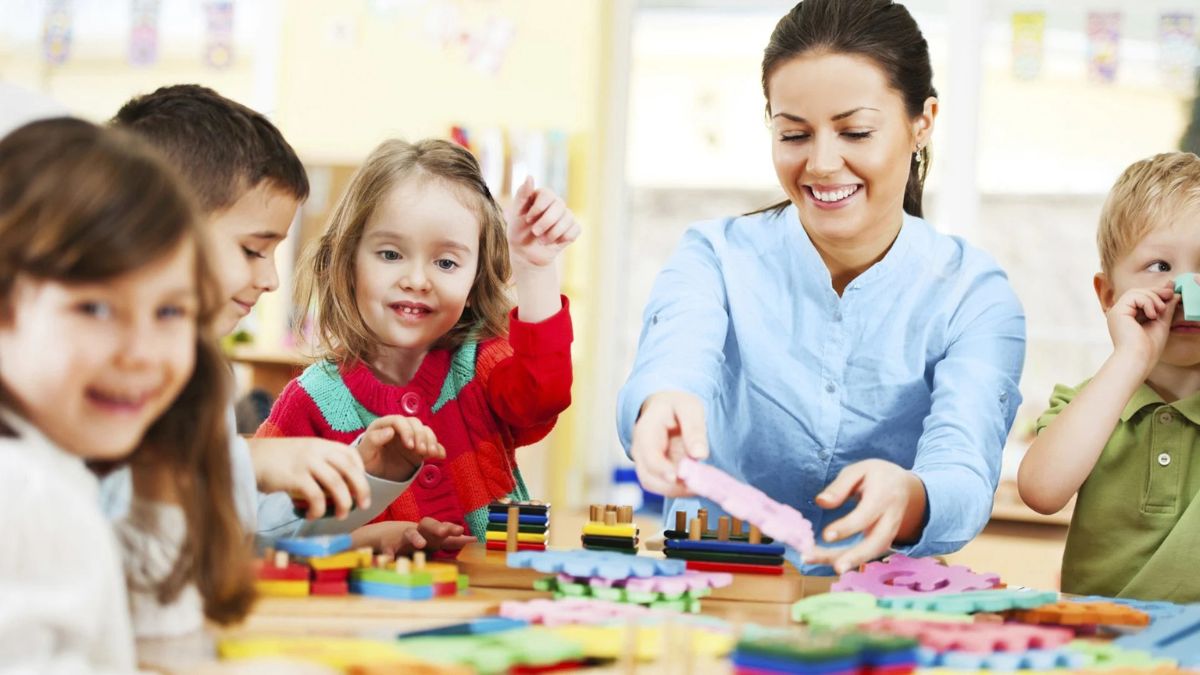EDUCATION
5 Essential Concepts in IB Economics Every Student Must Understand

IB Economics is a subject that introduces students to the foundations of economic theory and the dynamics of real-world markets. Mastering key concepts is essential not only for exam success but also for applying economic principles in various fields. Understanding these concepts gives students the ability to analyze complex economic issues and make informed decisions. In this article, we will explore five crucial concepts in IB Economics that every student should know.
Concept 1: Scarcity and Resource Allocation
Scarcity is the fundamental concept of economics, as it addresses the basic problem that resources are limited while human wants are infinite. The concept of scarcity forces societies to make choices about how to allocate their resources effectively. As a result, the study of economics revolves around finding the best way to distribute finite resources to meet as many needs as possible.
In the context of IB Economics, scarcity leads to the essential economic questions: What to produce? How to produce it? And for whom to produce? Every country faces this dilemma, whether it’s allocating food and healthcare, or distributing wealth and education. An example of scarcity in real life could be a country that must decide between spending its limited resources on building roads or investing in hospitals. According to economist Paul Samuelson, “Economics is the study of how people seek to satisfy their needs and wants by making choices.” This highlights the importance of decision-making in resource allocation. Understanding scarcity is a critical first step in grasping the more complex ideas of economics.
Concept 2: Demand, Supply, and Market Equilibrium
The relationship between demand and supply forms the backbone of market economies. In IB Economics, students are taught how these two forces interact to determine prices and quantities in the market. The law of demand states that as the price of a good increases, the quantity demanded generally decreases. On the other hand, the law of supply indicates that as the price increases, the quantity supplied rises.

Market equilibrium occurs when the quantity demanded equals the quantity supplied, and the market price stabilizes. This balance is crucial in understanding how markets function efficiently. If there is a shift in either demand or supply, the equilibrium price and quantity will change. For example, if a new technology increases the efficiency of a product, the supply curve shifts right, leading to a lower price and higher quantity demanded.
For students preparing for exams, understanding these shifts and how they affect market equilibrium is vital. Many students benefit from IB Economics tuition, where they can receive personalized guidance on graph interpretation and market analysis. Tutors help clarify how to apply these concepts to both theoretical problems and real-world scenarios. With the right support, students can confidently navigate complex topics like these and improve their analytical skills.
Concept 3: Elasticity
Elasticity refers to how responsive demand or supply is to changes in price or income. In IB Economics, students study different types of elasticity: price elasticity of demand (PED), income elasticity of demand (YED), and cross-price elasticity of demand (XED). These measures help economists understand how sensitive consumers are to price changes, and whether they will reduce or increase their consumption.
- Price Elasticity of Demand (PED): Measures how much the quantity demanded changes in response to a change in price. Products like luxury goods often have high PED, meaning consumers reduce their demand significantly if prices rise.
- Income Elasticity of Demand (YED): Measures how much demand changes when consumer incomes change. Normal goods see an increase in demand as income rises, while inferior goods experience the opposite.
- Cross-Price Elasticity of Demand (XED): Looks at how demand for one good changes when the price of a related good changes. For example, if the price of tea rises, the demand for coffee (a substitute good) might increase.
Elasticity is important for both businesses and policymakers. Understanding whether a product is elastic or inelastic can guide pricing strategies, taxes, and subsidies. As an example, governments may increase taxes on inelastic goods like cigarettes, knowing that demand will not decrease significantly. In the classroom, exploring elasticity concepts provides essential practice for interpreting graphs and applying mathematical formulas, which are crucial for exams.
Concept 4: Market Failure and Government Intervention
Market failure occurs when the allocation of goods and services by a free market is not efficient. IB Economics teaches students about the various types of market failure, including externalities, public goods, and information asymmetry. These failures often require government intervention to improve social welfare.
- Externalities: Positive or negative side effects of economic activities that affect third parties. For example, pollution from factories is a negative externality, while education provides positive externalities to society.
- Public Goods: Goods that are non-excludable and non-rivalrous, meaning no one can be excluded from using them, and one person’s use does not reduce their availability to others. Clean air is a prime example of a public good.
- Information Asymmetry: A situation where one party in a transaction has more information than the other, leading to an inefficient market outcome. For instance, if a car dealer knows more about a vehicle’s defects than the buyer, the buyer might make an unfavorable purchase decision.
Governments intervene through policies like taxation, subsidies, or regulation to correct market failures. For example, the government might tax carbon emissions to reduce pollution, or fund public healthcare to ensure that all citizens have access to essential services. These interventions are critical in improving market efficiency and achieving a better distribution of resources.
Concept 5: Macroeconomic Objectives
Macroeconomics deals with the broader economy and its objectives, which are essential for sustainable growth. In IB Economics, students learn about the three main macroeconomic objectives: economic growth, low inflation, and low unemployment. These goals are interrelated, and governments must often balance them to achieve overall economic stability.

- Economic Growth: The increase in the value of goods and services produced by an economy. Governments aim for steady, sustainable growth to improve living standards.
- Inflation: A general rise in the price level of goods and services. Central banks aim to control inflation to prevent it from eroding purchasing power.
- Unemployment: The percentage of the labor force that is not working but is actively seeking employment. High unemployment can lead to lower consumer spending and social unrest.
Balancing these objectives is challenging because policies that benefit one goal may harm another. For example, efforts to reduce unemployment may lead to higher inflation. The Phillips Curve demonstrates this trade-off, illustrating the inverse relationship between inflation and unemployment in the short run.
Conclusion
Mastering the key concepts of IB Economics is essential for students aiming to excel in their exams and gain a deep understanding of how economies operate. By grasping topics like scarcity, market equilibrium, elasticity, market failure, and macroeconomic objectives, students can analyze real-world issues with confidence. As Paul Samuelson wisely said, “Economics is the study of how people seek to satisfy their needs and wants by making choices.” To truly master these concepts, many students benefit from personalized support, such as IB Economics tuition, which can help solidify their understanding and improve their analytical abilities. Whether you’re struggling with complex theories or simply seeking to enhance your performance, a tutor can provide invaluable guidance.
EDUCATION
Children’s Injuries at Houston Daycares: Parental Rights and Legal Remedies

Caring for your child’s safety is your utmost priority. Daycares in Houston should provide a safe, nurturing environment for your child. Unfortunately, accidents can happen, leaving your child injured. It’s a parent’s nightmare, but understanding your rights helps you take action. If your child suffers an injury at a daycare, you have options. You deserve to know what steps you can take to seek justice and ensure accountability. A Houston personal injury lawyer for child injury cases offers guidance and support during this challenging time. You need clear, effective solutions to protect your child’s future. Understanding legal remedies empowers you to hold those responsible accountable. This blog explains how to navigate legal paths and ensures you feel confident about your child’s well-being. Remember, your child’s safety is non-negotiable, and you have the right to pursue justice when that safety is compromised.
Common Injuries in Daycares
Daycare injuries can range from minor cuts to severe trauma. Knowing what commonly occurs helps you identify potential risks. Understanding the frequency and types of injuries provides insight into preventive measures.
| Type of Injury | Common Causes |
| Bruises and Scrapes | Falls, playground accidents |
| Fractures | Climbing equipment, slips |
| Head Injuries | Falling objects, falls |
| Bites | Interaction with other children |
Your Rights as a Parent
When your child is injured, knowing your rights is critical. You have the right to obtain detailed reports from the daycare. Requesting medical records and injury reports ensures transparency. Understanding your rights helps you advocate for your child effectively.
Legal Remedies Available
Legal remedies provide a path to hold daycares accountable. In Texas, filing a personal injury claim for your child involves specific steps. Consult with a Houston personal injury lawyer to navigate these complexities.
- Document Everything: Keep detailed records of all incidents.
- Seek Medical Attention: Get a professional medical evaluation for your child immediately.
- Contact a Lawyer: Professional guidance ensures you understand all legal options.
The Importance of Immediate Action
Taking immediate action is essential. Delay can lead to loss of evidence or missed opportunities for resolution. Early intervention supports your claim and protects your child’s rights.
Steps to Protect Your Child’s Future
Protecting your child’s future involves more than just legal action. Ensuring they receive proper medical care and emotional support is crucial.
- Medical Care: Follow up on all medical advice.
- Emotional Support: Be attentive to emotional changes and seek counseling if needed.
- Education: Discuss safety measures with daycare providers to prevent future incidents.
Understanding the Role of Licensing and Regulations
Daycares are subject to regulations ensuring child safety. Understanding these helps you evaluate the adequacy of a daycare’s safety measures. Regulations often dictate staffing ratios, safety standards, and facility inspections.
According to the Texas Department of Family and Protective Services, daycares must meet specific guidelines to operate. If a daycare fails to comply, legal consequences can follow, supporting your case for negligence.
Preventive Measures for Parents
While accidents can’t always be prevented, taking proactive steps minimizes risks. Choose daycares with strong safety records and open communication policies.
- Research Daycares: Check reviews and safety records.
- Regular Communication: Stay informed about daily activities and incidents.
- Advocate for Safety: Involve yourself in safety discussions with daycare providers.
In conclusion, addressing daycare injuries involves knowing your rights and acting decisively. You have the tools to protect your child and ensure their safety. Recognizing and utilizing your legal options empowers you to advocate effectively for your child. Your involvement, knowledge, and prompt action safeguard your child’s future.
EDUCATION
A2Z Education: A Comprehensive Approach to Modern Learning

Education is transforming faster than ever before. Advancements in technology, shifts in societal priorities, and the demand for lifelong learning have created a new paradigm for how we understand and pursue knowledge. Enter A2Z Education, a holistic and flexible approach that empowers learners to excel in a dynamic world.
This blog will explore what makes A2Z Education different, how it adapts to modern challenges, and the key reasons why we believe it is the future of learning. If you’re an educator, learner, or a parent looking to keep pace with modern education, this is for you.
What Is A2Z Education?
A2Z Education is more than just a method; it’s a mindset. It embodies a comprehensive, personalized, and future-proof approach to learning that addresses the needs of students and educators alike. Unlike traditional systems, which often focus narrowly on academic achievement, A2Z Education embraces a broader spectrum of skills, technologies, and life experiences for holistic personal growth.
This model integrates key elements such as personalized learning plans, technological tools, social-emotional development, and community involvement to prepare students for success in the 21st century.
Why We Need a Modern Learning Approach
The challenges of traditional education systems are well documented. One-size-fits-all curricula fail to cater to learners’ unique needs, resulting in disengagement and gaps in understanding.
Adding to this are the rising demands of the global workforce, which increasingly values adaptability, creative problem solving, and soft skills like communication and emotional intelligence (EQ). Combined, these pressures highlight an urgent need for an approach like A2Z Education that is more inclusive, flexible, and forward-thinking.
The Core Issues with Traditional Education
- Lack of Individualization
Traditional systems often ignore individual differences in learning styles, speeds, and interests. This leaves some students struggling to keep up while others are bored and unchallenged.
- Reliance on Static Methods
Static, teacher-led lectures dominate classrooms, limiting opportunities for students to engage in collaborative, hands-on, or self-directed learning.
- Missing Life Skills
Key skills like emotional regulation, critical thinking, and even financial literacy are often left out of traditional education systems, leaving students unprepared for real-life challenges.
A2Z Education addresses these gaps by adopting a more proactive and inclusive framework.
Key Pillars of A2Z Education
The strength of A2Z Education lies in its multidimensional approach to learning. Let’s explore its foundational pillars.
1. Personalized Learning Experiences
Customization lies at the heart of A2Z Education. Learners differ widely in their interests, talents, and paces, and personalized learning tailors the experience accordingly.
For instance, students may pursue customized study plans that enable them to work on areas where they need development while accelerating in areas of strength. AI-driven tools like adaptive learning platforms can analyze performance and suggest activities tailored to individual needs.
- Example Benefit: A student struggling with fractions in mathematics could receive targeted exercises and real-time feedback, while another excelling in algebra could start exploring calculus concepts earlier.
2. Tech-Driven Education
Technology plays a pivotal role in modernizing learning. With A2Z Education, tools such as virtual reality (VR), gamified education platforms, and AI tutors transform how students engage with content.
- Example Use Case: VR simulations allow budding engineers to prototype designs safely or bring historical events to life in immersive 3D environments, making learning interactive and deeply engaging.
Additionally, online platforms are bridging gaps for remote learning, enabling access to quality education regardless of geography.
3. Development of Soft Skills
The world needs more than academics. A2Z Education promotes the development of essential life skills like communication, adaptability, critical thinking, and emotional intelligence (EQ).
For example, group projects or peer-based learning opportunities expose students to diverse perspectives, improving collaboration and interpersonal dynamics. Programs are also designed to tackle mental health and stress management, ensuring well-rounded development.
4. Cross-Disciplinary Learning
The traditional siloed approach to subjects is outdated. A2Z Education takes an interdisciplinary approach, encouraging students to connect fields of study like technology, the arts, and business.
For instance, a robotics course might integrate principles from physics, coding, and visual design, showing students how diverse skill sets come together in real-world problem-solving.
5. Community Integration
Learning extends beyond the classroom, and A2Z Education thrives on involving families, communities, and industry professionals. Mentorships, internships, and volunteering opportunities connect students to the world around them and give them practical insights and experiences early on.
The Impact of A2Z Education on Learners
The multifaceted A2Z model is not just theoretical; it achieves tangible results. Here’s what students and educators gain from adopting this modern approach to learning.
- More Engaged Learners
By tailoring lessons to personal interests and leveraging interactive technologies, students become more invested in their education.
- Prepared for the Future
A strong emphasis on technology, interdisciplinary thinking, and problem-solving equips students with skills that employers across industries demand.
- Improved Mental Well-being
Building emotional intelligence and embedding stress-reduction techniques into curricula ensures that learners build resilience alongside academic excellence.
- Lifelong Learning Habits
The adaptability and curiosity instilled in students under the A2Z model encourage them to continue learning beyond their formal education.
How Schools, Parents, and Students Can Get Started
Transitioning to the A2Z framework doesn’t have to be overwhelming. Small changes introduced strategically can build momentum toward a more personalized and effective learning approach over time.
Schools and Educators
- Adopt technology gradually by starting with simple e-learning platforms or gamified lessons.
- Offer professional development programs that train teachers to implement student-centered strategies.
Parents
- Encourage curiosity by supporting your child’s interests and extracurricular activities.
- Take an active role in celebrating project-based learning and practical problem solving.
Students
- Be proactive in exploring your passions, even outside of formal education settings.
- Experiment with digital tools to identify learning methods you enjoy most.
Moving Forward with A2Z Education
A2Z Education offers a framework to redefine success in learning. It empowers individuals to grow academically, socially, and emotionally while preparing them for challenges yet to come.
Whether you’re an educator looking to innovate in your classroom, a parent eager to support your child’s growth, or a learner ready to take control of your education, the A2Z model enables progress on every front.
Start small, but think big. Transform learning into an experience that’s not just effective, but also meaningful.
EDUCATION
How Online English Tutors Use Storytelling to Make Learning More Engaging

Learning English doesn’t have to mean boring grammar drills and endless vocabulary lists. Across America, students are discovering that stories make language learning come alive in ways textbooks never could. When tutors weave storytelling into their lessons, students engage more deeply, remember the material longer, and enjoy the learning process.
This article explores how virtual English instruction uses narrative techniques to transform the learning experience from mundane to memorable.
Throughout this article, you’ll discover the specific storytelling strategies that make online English lessons more effective, the science behind why narratives improve learning retention, and practical ways students benefit from story-based teaching approaches.
Whether you struggle with grammar concepts, need to expand your vocabulary, or simply want more engaging English instruction, understanding how storytelling transforms the virtual classroom will help you recognize effective teaching when you see it.
Why Stories Make Learning Stick
Stories activate multiple brain regions at the same time, creating stronger connections in your brain than just learning facts. When information is wrapped up in a story, students process it emotionally as well as logically, which makes the memory stronger. This is why students often remember stories long after they forget the rules or definitions they were taught.
Besides helping memory, stories turn abstract ideas into real, relatable situations and characters. Grammar rules turn into tools for communication when they are shown through stories that students care about. This helps bridge the gap between knowing something in theory and using it in real-life conversations.
How Virtual Tutors Incorporate Storytelling
Online learning settings create new conditions that enable teachers to implement narrative-based educational approaches. Interactive storytelling becomes possible through screen sharing features which let students develop stories alongside their instructor instead of only receiving information.
When learning takes place through collaborative work students achieve higher participation levels alongside greater responsibility in their academic tasks.
Multiple teaching professionals have identified narrative’s ability to aid students in learning languages. Online English tutors, make use of storytelling methods to convert information into personal educational experiences. Faculty members use character building alongside plot creation combined with story evaluation which enables students to retain language patterns that translate into authentic communication.
Personalized Narrative Approaches
Real classrooms provide insufficient opportunities to deliver individualized story content that suits students’ personal preferences and their learning approaches. Virtual tutoring addresses this restriction through personalized story selection which lets students choose between science fiction stories, sports tales, and historical books. The individualized content engages students right from the start which drives their attention during entire lessons.
Different students interact with distinct storytelling structures because their learning capabilities and preferred strengths vary. Different students demonstrate better understanding through visual illustrations with animations or they excel when presented with audio content or interactive text-based programs. Online tutors follow a strategy to adapt their storytelling methods according to the personal learning preferences of their students to achieve better teaching outcomes.
Digital Storytelling Tools
The virtual learning space provides technological assets that outperform traditional education environments regarding the delivery of narrative instruction. The tandem implementation of interactive storyboards with digital character creators along with animated scenarios enhances visual retention by supporting vocabulary and grammar teachings simultaneously. The mixed media components produce interactive learning modes that enhance the student’s ability to remember information.
The virtual education environment enables instructors to use genuine cultural materials that let students learn through worldwide storytelling approaches. Educational activities based on different kinds of stories let students master linguistic skills concurrently with cultural understanding. Language proficiency achieves higher levels of development when culture learns through storytelling rather than learning grammar alone.
Benefits of Different Learning Challenges
Storytelling helps students overcome several challenges in learning English:
- Grammar confusion: Stories show grammar rules in real, understandable ways.
- Vocabulary limitations: Character dialogue helps students remember new words.
- Reading comprehension struggles: Plot-driven stories keep students engaged and improve their understanding.
Overcoming Grammar Anxiety
Many students get anxious about grammar rules because they seem disconnected from real conversations. Story-based instruction helps students see how grammar works in a story. For example, verb tenses are easier to understand when they show how time passes in a story, making grammar feel less like a set of random rules.
Mistakes also stop feeling like failures. When students make mistakes with grammar in a story, it feels like fixing part of the story rather than messing up. This makes students feel less anxious and more motivated to fix their mistakes, which helps create a more positive learning environment.
Expanding Vocabulary Naturally
Memorizing word lists might help in the short term, but it’s hard to use those words in real conversations. Story-based learning introduces new words in context, which makes it easier to remember them. When students hear new words in a story, they can understand them better because the words are connected to the characters and situations in the story.
The more students hear and see certain words in different parts of the story, the more they remember them. The emotional connection to the story also makes the vocabulary stick better than using flashcards or memorization.
Comparing Traditional vs. Narrative-Based Tutoring
| Learning Element | Traditional Approach | Storytelling Approach |
| Grammar Instruction | Isolated rules and exercises | Rules are shown through character dialogue |
| Vocabulary Development | Word lists and definitions | Words introduced through plot needs |
| Student Engagement | Primarily cognitive focus | Emotional and cognitive involvement |
| Error Correction | Direct correction of mistakes | Revision as part of story improvement |
| Cultural Context | Separate cultural notes | Integrated through authentic narratives |
| Retention | Short-term memorization | Long-term conceptual understanding |
Measuring Progress Through Story Development
Traditional tests don’t always show how much a student is learning. Story-based teaching, however, lets students create their own stories to show what they’ve learned. As students write more complex stories, they show how well they understand and use the language. This kind of progress is more visible and concrete than just test scores.
Parents and students can track their improvement by looking at story portfolios. These collections of stories show how a student’s language skills have grown over time, from simple stories to more complex ones with rich plots and characters. This progress helps motivate students and boosts their confidence in using English.
Implementing Storytelling in Different Age Groups
Different age groups need different kinds of stories. Young kids like stories with clear plots and simple characters, while teens are more interested in stories that deal with social issues and more complex themes. Online tutors can adjust the stories based on the student’s age and language level to keep them engaged and learning.
As students become more proficient, the stories they work with also become more complex. Beginners might focus on simple stories with basic vocabulary, while more advanced students might explore narratives with deeper themes and figurative language. This helps students stay challenged without being overwhelmed.
Frequently Asked Questions
How does storytelling-based tutoring help students prepare for standardized tests? Although storytelling might seem different from the usual test preparation, the deeper understanding of language gained through stories helps students perform better on grammar, vocabulary, and reading comprehension sections of tests.
Can storytelling approaches help students who primarily need academic writing support?
Yes! Storytelling helps students understand structure, organization, and voice, all of which are important for academic writing. These skills transfer directly to writing more powerful essays and reports.
Do storytelling methods work for students who consider themselves “not creative”?
Absolutely. Online tutors guide students through storytelling step-by-step, so they don’t need to be naturally creative. The method builds confidence and creativity gradually, making it suitable for all kinds of learners.
Conclusion
Online English tutoring through storytelling represents a big change from just memorizing rules to using language to communicate. By learning grammar, vocabulary, and reading comprehension through stories, students understand language more deeply and actually enjoy using it. This story-based approach makes learning feel less like a chore and more like an adventure.
For students who have struggled with traditional English lessons, online tutoring that uses storytelling offers a fun and effective alternative. It helps students engage with the language in a meaningful way, making communication easier and more enjoyable.
-

 BLOG1 year ago
BLOG1 year agoATFBooru: A Hub for Animated Art and Community
-

 CONSTRUCTION1 year ago
CONSTRUCTION1 year agoBuilding a Home Gym in Your Basement (7 Key Renovation Tips)
-

 BLOG1 year ago
BLOG1 year agoFictionmania: A Deep Dive into the World of Transformative Stories
-

 GAMES1 year ago
GAMES1 year agoSnow Rider 3D: Unblocked Tips and Tricks for Gamers
-

 BLOG12 months ago
BLOG12 months agoGIFHQ: A Comprehensive Guide
-

 BLOG1 year ago
BLOG1 year agoVincent herbert new wife: A Detailed Overview
-

 BUSINESS1 year ago
BUSINESS1 year agoInvestiit.com Tips: A Comprehensive Guide for Smart Investing
-

 LIFESTYLE12 months ago
LIFESTYLE12 months agoAchieve Elegance with Chic Blue Formal Dresses and Redken Professional Hair Care for All Hair Types
